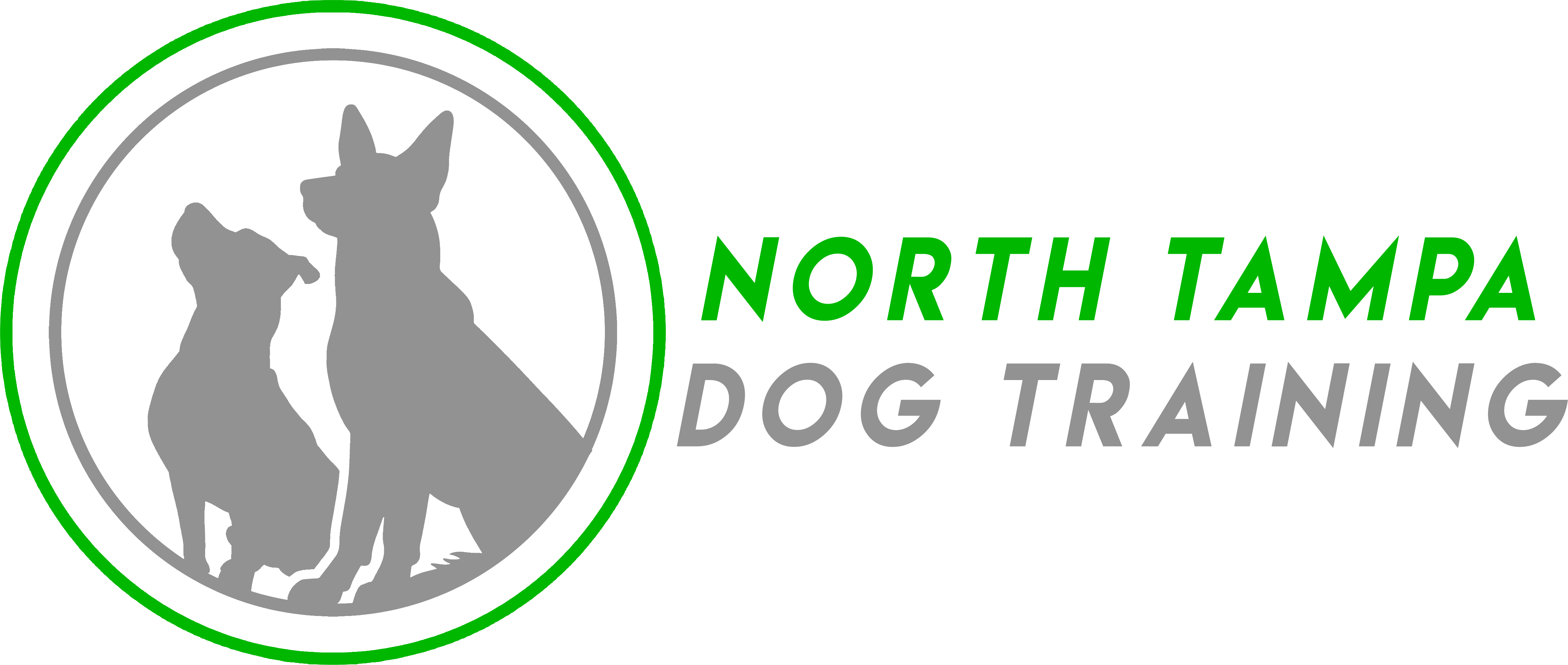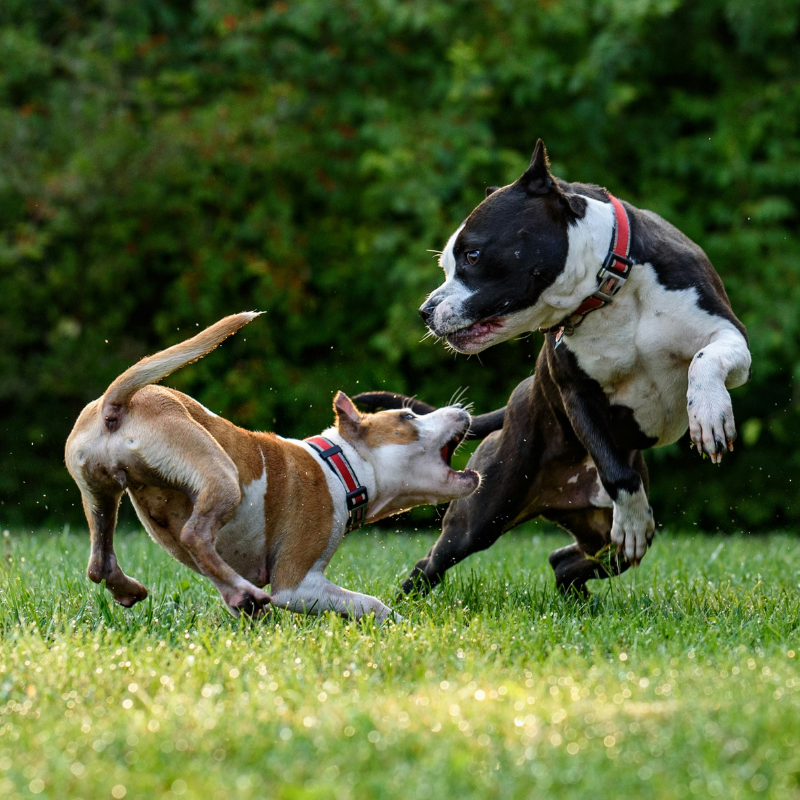Handling a situation where a dog has latched onto another animal requires immediate and careful intervention to prevent further injury. If you’re looking for dog aggression training in New Port Richey or seeking dog training, it’s essential to understand the techniques to safely manage these intense scenarios. Here’s an expanded guide on how to break up a dog fight and encourage a dog to release an animal from its grasp:
1. Stay Calm
- Importance: Your calm demeanor is crucial as dogs can sense panic which may escalate the aggression.
- Approach: Use a firm, calm voice to command the dog, establishing control over the situation.
Staying calm during a tense situation involving dog aggression is not just beneficial—it’s essential. When a dog is agitated or engaged in aggressive behavior, it can sense the anxiety and tension in its handler’s voice and body language, which can exacerbate the dog’s stress and aggression. A calm demeanor serves as a non-verbal cue to the dog that the situation is under control, which can help de-escalate the aggression. By maintaining composure, you’re more likely to think clearly and react appropriately without panic, increasing the chances of resolving the situation safely. Moreover, a calm approach reinforces your role as a stable leader, which can have a significant, positive impact on the outcome, ensuring both your safety and that of the dog. This principle is foundational in training and managing dogs, especially those undergoing dog aggression.
2. Do Not Grab the Collars
- Risk: Inserting your hands near the dogs’ mouths, especially when they are latched on, increases the risk of bites.
- Safe Practice: Avoid reaching for the dog’s collar or head and opt for safer intervention methods.
3. Use Distractions
- Tools: A loud noise, such as clapping or banging on a hard surface, or using water from a hose can distract the dog enough to loosen its grip.
- Effectiveness: Such interruptions can momentarily break the dog’s concentration, allowing for a chance to separate the animals.
4. The Wheelbarrow Method
- Technique: If the dog is actively fighting and not releasing, approach from behind, grab the back legs like a wheelbarrow, and walk backward. This can unbalance the dog and reduce its ability to maintain a grip.
- Precaution: Ensure your safety first; this method should only be attempted if there is no risk of being bitten.
5. Break Sticks (for trained individuals)
- Tool Description: A break stick is a device designed to be inserted into the mouth of a dog that won’t release its bite. It is used to pry the dog’s jaws open.
- Usage: Only use a break stick if you are trained in its use, as improper handling can cause harm to both the dog and the person using it.
6. Separate and Secure
- Immediate Action: After the dogs are separated, securely confine them in different areas to prevent another encounter.
- Monitoring: Assess for injuries and consult a veterinarian for any serious conditions.
7. Command Release Training
- Training Technique: Train your dog with a “release” or “let go” command during calm, non-aggressive play. This establishes a command that can be used in tense situations.
- Consistency: Regular practice of this command can help the dog learn to obey it even under stress.
8. Analyze and Train
- Post-incident Analysis: Understanding what triggered the behavior is crucial to prevent future occurrences.
- Professional Training: Enroll your dog in a dog aggression training program in New Port Richey or consult a dog trainer inNew Port Richey specializing in aggressive behaviors to address the root causes and improve your dog’s reactions.
Safety First
- Professional Help: If the situation seems beyond your control, do not hesitate to seek professional dog trainer immediately.
Summary of Key Dog Aggression Training Components and Insights
- Follow-Up Training and Support: Essential to reinforce behaviors learned and prevent regression.
- Detailed Training Techniques Used During Follow-Up: Tailored techniques such as positive reinforcement and command training to ensure effective learning.
- Case Studies: Real-life success stories that demonstrate the effectiveness of consistent follow-up training.
- Expert Advice on the Importance of Consistency: Consistency in command and routine is key to successful aggression management.
- Interactive Elements in Follow-Up Training: Socialization through controlled settings to enhance behavior in public spaces.
- Owner Education: Empowers owners with the knowledge to handle and reinforce training effectively.
- Challenges and Solutions Post-Training: Addressing potential behavioral relapses with strategic, tailored solutions.
- Maintenance Strategies for Long-Term Success: Establishing routines that integrate trained behaviors into daily life.
- Feedback Mechanisms: Real-time adjustments and enhanced communication for optimal training outcomes.
The transition back home and the subsequent follow-up dog training are as important as the initial dog board and training experience. With the right follow-up support, your journey with your dog can be smooth and rewarding, reinforcing the bond and behaviors that lead to a happy, obedient pet. Implementing the strategies learned through dog training in New Port Richey can help maintain these outcomes, ensuring your dog’s progress remains solid in the long run. Contact us today to learn more about dog safety for a happier healthier dog.

